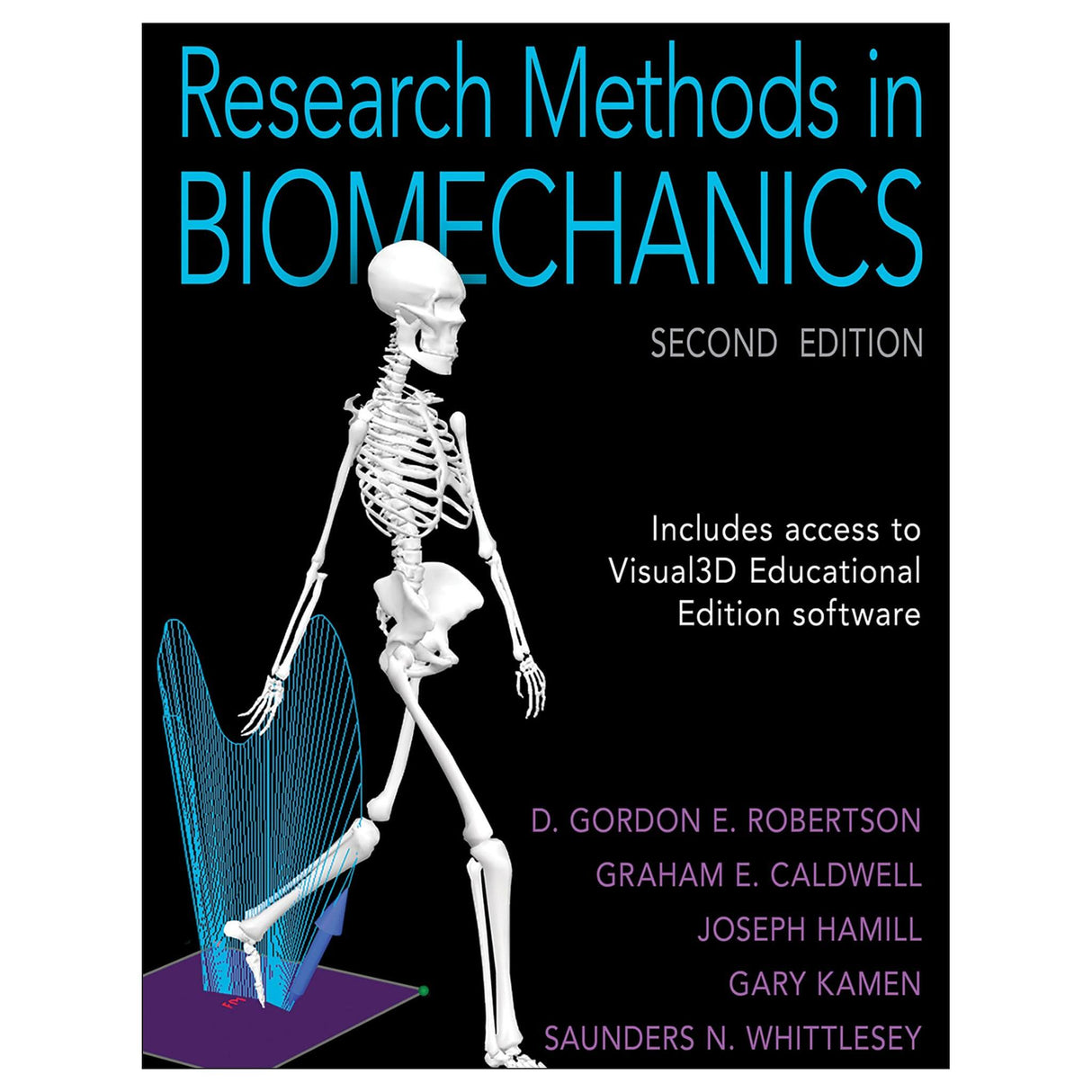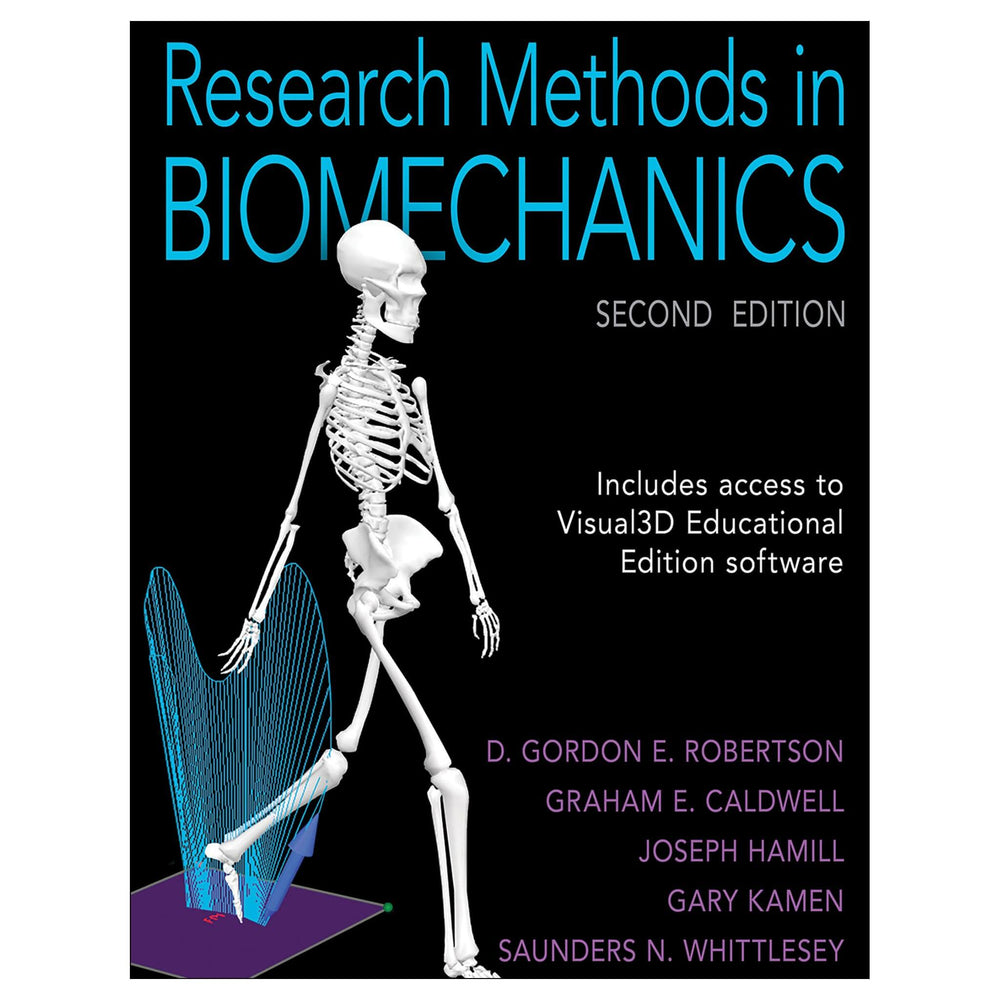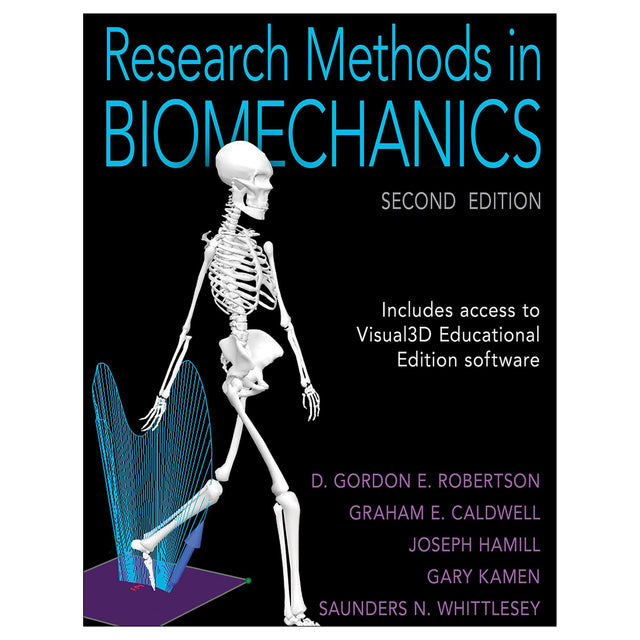Research Methods in Biomechanics-2nd Edition
$109.00 USD
Research Methods in Biomechanics, Second Edition, demonstrates the range of available research techniques and how to best apply this knowledge to ensure valid data collection. In the highly technical field of biomechanics, research methods are frequently upgraded as the speed and sophistication of software and hardware technologies increase. With this in mind, the second edition includes up-to-date research methods and presents new information detailing advanced analytical tools for investigating human movement.
Expanded into 14 chapters and reorganized into four parts, the improved second edition features more than 100 new pieces of art and illustrations and new chapters introducing the latest techniques and up-and-coming areas of research. Additional enhancements in this edition include the following:
• Special features called From the Scientific Literature highlight the ways in which biomechanical research techniques have been used in both classic and cutting-edge studies.
• An overview, summary, and list of suggested readings in each chapter guide students and researchers through the content and on to further study.
• Sample problems appear in select chapters, and answers are provided at the end of the text.
• Appendixes contain mathematical and technical references and additional examples.
• A glossary provides a reference for terminology associated with human movement studies.
Research Methods in Biomechanics, Second Edition, assists readers in developing a comprehensive understanding of methods for quantifying human movement. Parts I and II of the text examine planar and three-dimensional kinematics and kinetics in research, issues of body segment parameters and forces, and energy, work, and power as they relate to analysis of two- and three-dimensional inverse dynamics. Two of the chapters have been extensively revised to reflect current research practices in biomechanics, in particular the widespread use of Visual3D software.
In part III, readers can explore the use of musculoskeletal models in analyzing human movement. This part also discusses electromyography, computer simulation, muscle modeling, and musculoskeletal modeling; it presents new information on MRI and ultrasound use in calculating muscle parameters. Part IV offers a revised chapter on additional analytical procedures, including signal processing techniques. Also included is a new chapter on movement analysis and dynamical systems, which focuses on how to assess and measure coordination and stability in changing movement patterns and the role of movement variability in health and disease. In addition, readers will find discussion of statistical tools useful for identifying the essential characteristics of any human movement.
The second edition of Research Methods in Biomechanics explains the mathematics and data collection systems behind both simple and sophisticated biomechanics. It assists both beginning and experienced researchers in developing their methods for analyzing and quantifying human movement.
Audience
Reference for biomechanics professionals, researchers, motor behaviorists, and ergonomists; textbook for undergraduate and graduate biomechanics courses in research methods.
Part I. Kinematics
Chapter 1. Planar Kinematics
D. Gordon E. Robertson and Graham E. Caldwell
Description of Position
Degrees of Freedom
Kinematic Data Collection
Linear Kinematics
Angular Kinematics
Summary
Suggested Readings
Chapter 2. Three-Dimensional Kinematics
Joseph Hamill, W. Scott Selbie, and Thomas M. Kepple
Collection of Three-Dimensional Data
Coordinate Systems and Assumption of Rigid Segments
Transformations between Coordinate Systems
Defining the Segment LCS for the Lower Extremity
Pose Estimation: Tracking the Segment LCS
Joint Angles
Joint Angular Velocity and Angular Acceleration of Cardan Joint Angles
Summary
Suggested Readings
Part II. Kinetics
Chapter 3. Body Segment Parameters
D. Gordon E. Robertson
Methods for Measuring and Estimating Body Segment Parameters
Two-Dimensional (Planar) Computational Methods
Three-Dimensional (Spatial) Computational Methods
Summary
Suggested Readings
Chapter 4. Forces and Their Measurement
Graham E. Caldwell, D. Gordon E. Robertson, and Saunders N. Whittlesey
Force
Newton’s Laws
Free-Body Diagrams
Types of Forces
Moment of Force, or Torque
Linear Impulse and Momentum
Angular Impulse and Momentum
Measurement of Force
Summary
Suggested Readings
Chapter 5. Two-Dimensional Inverse Dynamics
Saunders N. Whittlesey and D. Gordon E. Robertson
Planar Motion Analysis
Numerical Formulation
Human Joint Kinetics
Applications
Summary
Suggested Readings
Chapter 6. Energy, Work, and Power
D. Gordon E. Robertson
Energy, Work, and the Laws of Thermodynamics
Conservation of Mechanical Energy
Ergometry: Direct Methods
Ergometry: Indirect Methods
Mechanical Efficiency
Summary
Suggested Readings
Chapter 7. Three-Dimensional Kinetics
W. Scott Selbie, Joseph Hamill, and Thomas Kepple
Segments and Link Models
3-D Inverse Dynamics Analysis
Presentation of the Net Moment Data
Joint Power
Interpretation of Net Joint Moments
Sources of Error in Three-Dimensional Calculations
Summary
Suggested Readings
Part III. Muscles, Models, and Movement
Chapter 8. Electromyographic Kinesiology
Gary Kamen
Physiological Origin of the Electromyographic Signal
Recording and Acquiring the Electromyographic Signal
Analyzing and Interpreting the Electromyographic Signal
Applications for Electromyographic Techniques
Summary
Suggested Readings
Chapter 9. Muscle Modeling
Graham E. Caldwell
The Hill Muscle Model
Muscle-Specific Hill Models
Beyond the Hill Model
Summary
Suggested Readings
Chapter 10. Computer Simulation of Human Movement
Saunders N. Whittlesey and Joseph Hamill
Overview: Modeling As a Process
Why Simulate Human Movement?
General Procedure for Simulations
Control Theory
Limitations of Computer Models
Summary
Suggested Readings
Chapter 11. Musculoskeletal Modeling
Brian R. Umberger and Graham E. Caldwell
Musculoskeletal Models
Control Models
Analysis Techniques
Summary
Suggested Readings
Part IV. Further Analytical Procedures
Chapter 12. Signal Processing
Timothy R. Derrick and D. Gordon E. Robertson
Characteristics of a Signal
Fourier Transform
Time-Dependent Fourier Transform
Sampling Theorem
Ensuring Circular Continuity
Smoothing Data
Summary
Suggested Readings
Chapter 13. Dynamical Systems Analysis of Coordination
Richard E.A. van Emmerik, Ross H. Miller, and Joseph Hamill
Movement Coordination
Foundations for Coordination Analysis
Quantifying Coordination: Relative Phase Methods
Quantifying Coordination: Vector Coding
Overview of Coordination Analysis Techniques
Summary
Suggested Readings
Chapter 14. Analysis of Biomechanical Waveform Data
Kevin J. Deluzio, Andrew J. Harrison, Norma Coffey, and Graham E. Caldwell
Biomechanical Waveform Data
Principal Component Analysis
Functional Data Analysis
Comparison of PCA and FDA
Summary
Suggested Readings
“From how to understand and build concepts to new chapters on new techniques and research in the works, this provides a fine college-level analysis of the math and data collection systems behind biomechanics, and makes for a fine reference for any research interested in analyzing human movement.”
-- Midwest Book Review





